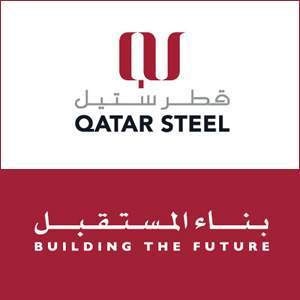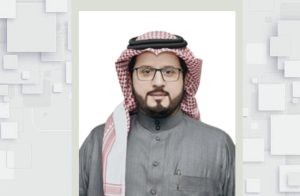Dr. Mahmoud Mohieldin
Perhaps I spent the last days of last year, and the first days of this year following what was reported by the media with astonishingly about the conditions of the global economy, and how it is exposed to various, multiple and continuous crises, which did not leave a source or a dimension that, did not include it. Analysts began to classify its severity and its impact on people’s lives and reasons for living. Then there are widely circulated economic newspapers, such as the London “Financial Times”, suddenly reporting news and reports about an atmosphere of optimism, which spread its infection to the Swiss resort of Davos; where last week held the World Economic Forum. The spirit of cheerful moods spread; especially with the global financial stock exchanges rising by about 4 percent since the beginning of the year.
This relatively optimistic trend supported China’s decision, as the second largest global economic entity, to end the “zero-corona” policy, reopen the country to ordinary life, and resume economic activity in production and consumption. Some also celebrated the decline in natural gas prices by about 80 per cent, easing the burden on the third largest economic grouping represented by Europe, which has suffered from a severe energy crisis and volatile prices.
The last reason for the positive impressions was the effect of the US inflationary reduction law and its promised and generously subsidized investments to implement green transition programs, especially in the areas of energy and infrastructure. Such indicators for the three largest economies in the world will prompt international financial institutions to update the global economic indicators to anticipate a global economy that avoids the pits of recession as a whole and controls inflation.
We should not be surprised at the speed of changing expectations and their directions, as I talked in a previous article published by Ghiraa newspaper last December, that “the conditions of uncertainty in which the world is living make the possibility of the occurrence of the announced expectations a kind of delusion. If some of these expectations are true, then they are uncalculated coincidence”. However, for those who have doubts, let them review the expectations of international institutions over the past three years, since the outbreak of the Coronavirus, regarding the global economy growth, inflation rates, and the prices of principal commodities, such as oil, foodstuffs, precious metals, and the exchange rates of major currencies, and determine how close they are to living reality.
Despite this, I do not doubt that the US economy will eventually get out of the current inflation crisis with the monetary policy measures in place, and the Federal Reserve may be forced to raise interest rates by between 25 and 75 basis points. That is, by less than a percentage point until the end of the year, then, it will take a while to review the reality of what is happening in the labour market between indicators that show its strength and other conflicting indicators related to laying off large numbers of workers in some major companies from the market. It will also follow indicators of economic growth to push it away from the threats of recession and will verify the extent of the resilience of small and medium enterprises, real estate, and the safety of the financial sectors from exposure to the risks of increasing non-performing loans.
As for China, after three years of closure due to Coronavirus, the speed of its return to regular life will have beneficial effects by raising growth and employment rates after a period that may be required to adapt to the new reality, from caution and reservation during the first months of this year. but if things are left to go in as expected, the growth rate of the Chinese economy will increase, with a positive impact on the average growth of the global economy. However, this increase in Chinese economic growth will be accompanied by an increase in the demand for energy, primary commodities, raw materials, transportation and travel prices. Which requires calculating the net effect, according to the extent of the response of the production, supply and distribution sectors, assuming the safety of supply chains from any natural or artificial disruptions because of adopting protectionism policies constrained by some of China trading partners.
The energy price increase may dissipate -due to the Chinese economy’s resumption of its growth path- the early manifestations of low inflation rates possibility in Europe. Especially with the atmosphere of the ongoing war in Ukraine, which will motivate the continuation of the European Central Bank’s restrictive policies, but rather endeavors to put pressure on public financial policies, so as not to adopt expansionary policies undermine its anti-inflationary efforts.
Perhaps the European case will be repeated with a delay in recovery. Not only due to energy and war problems, but also due to the demographic challenges that the old continent suffers from, “an increase in the rate of ageing, a decline in the rate of population growth, a decline in productivity, and a decrease in spending rates on innovation, research and development with limited exceptions”.
What concerns us is the net impact of these changes and the scramble between the major world economies on the developing countries. The records of recent global crises revealed that developing countries, especially middle-income ones, are usually the most significant losers except for a few, and the most troubled and vulnerable to the risks of these crises within these middle-income countries are middle-class families. The wealthy segments have something to protect them from these crises. Instead, they may benefit from it according to their sources of wealth and income. As for the lower-income segments, they have become familiar with a system of social protection networks and in-kind and monetary support, with specific costs in the state budget, which can protect these segments, provided that they are activated early and efficiently before the impact of the escalation of crises increases on them.
What I mean by the middle trap includes middle-income countries, which make up a third of the world’s economy, home to 75 per cent of its population, and home to more than 60 per cent of the world’s poor. Most Arab countries belong to this group, and a growing number of African countries constitute the population weight of the brown continent. I have previously indicated that middle-income countries do not avail the advantages of developed countries in borrowing cheaply in their local currencies from international markets without risks in the exchange rate and its fluctuations. Likewise, the middle-trap countries do not benefit from the advantages of cheap and easy borrowing from international development institutions, such as those that the poorest and lowest-income countries benefit from. Middle-income countries have been denied most of the concessional financing under the broad and misleading assumption that holds the capabilities to meet their financing needs through their domestic resources, private sector investments, and access to international financial markets. Ways of facilitating the lives of the poor and middle-income are required beyond considerations of sterile classification of countries, according to income segments that reduce the reality of development to misleading averages that do not take into account the sharp disparity in income distribution or the extent of vulnerability when exposed to shocks.
Therefore, we have two dilemmas summed up by the middle trap: once, if middle-income countries fall into it, and again if we take into account the conditions of the middle class in these countries. In addition, we may also notice the challenges faced by medium-sized enterprises, as large companies are privileged in financing with preferential transactions from banks and financial markets and small and micro-enterprises have support packages with local or external support. As for medium-sized enterprises in many developing countries, they are not supported or a helper in the atmosphere of crises, so it has not been favored by large companies, nor has it been afflicted by the bestowal of supporters of small projects. For this reason, the expression “the forgotten middle” spreads to describe the condition of those who fall into the middle category, whether it is a country, a company, or a middle-class family.
A review of ways to facilitate financing in times of crisis is required. In developing countries, it is necessary to reconsider what they obtain from international financial institutions and their excessive borrowing conditions by facilitating these conditions, whether in terms of cost, grace period, or funding period.
I have proposed, for example, that the cost of financing climate action is no more than 1 per cent, with a grace period of no less than ten years and a repayment period of no less than twenty years. This support be financed by pledges of $100 billion promised by developed countries that never fully reach the countries developing.
As for medium-sized companies, we must support the promising ones with the leading technological component and the tangible contribution to the operation, innovation and export. Middle-class families are seen as a support for societal stability, preserving their values, and among their parts, the social movement required for progress takes place.
Moreover, in the era of the rise of the Japanese economy after World War II, if young people were asked about any social position they wanted in the future, the answer came automatically with their desire to be like others. In societies, the middle class forms the majority of the components of its population, and the economic pyramid, the ambition and expectation of the individual to be like the general population are without any decrease.



























